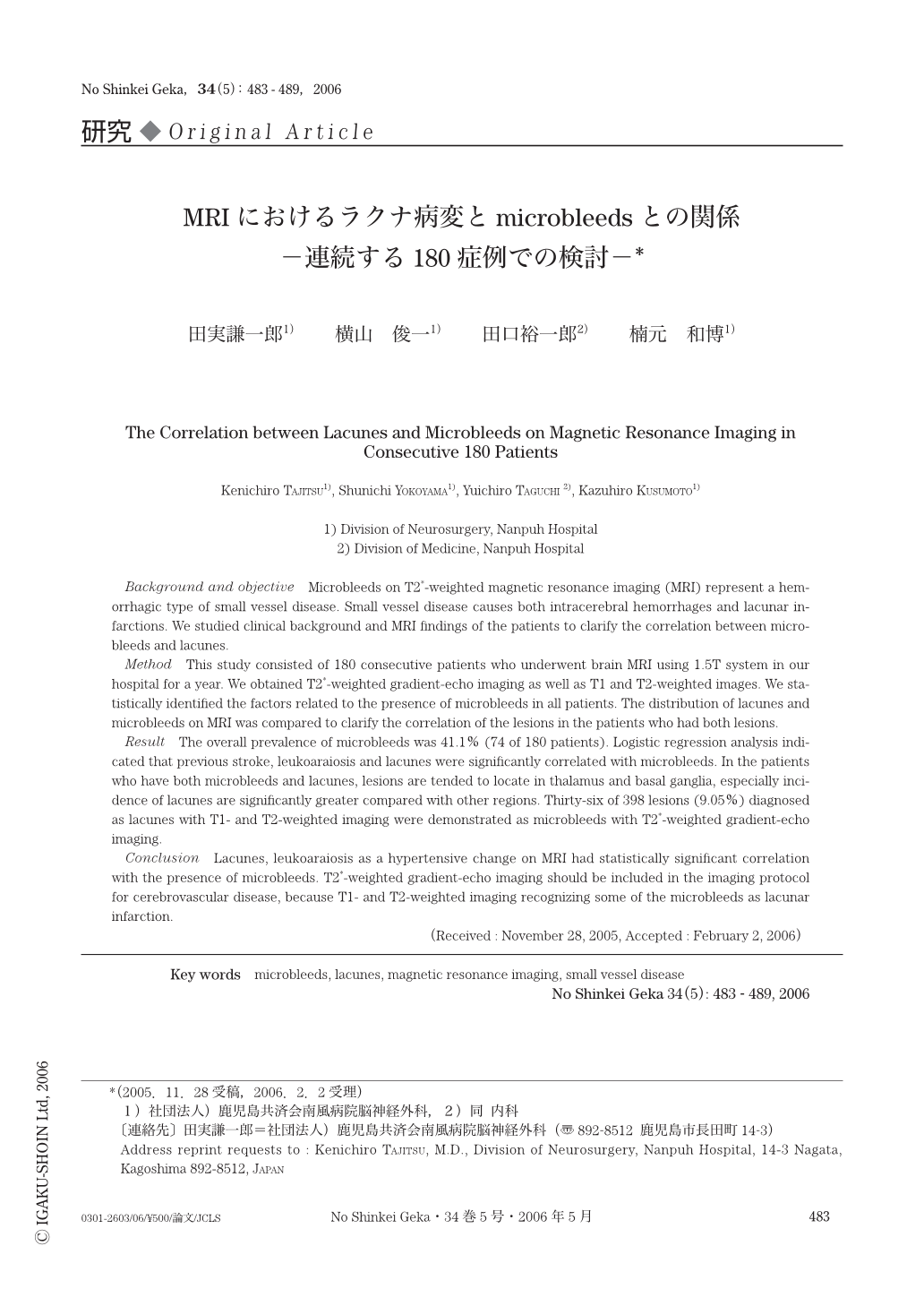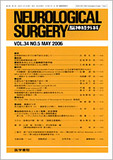Japanese
English
- 有料閲覧
- Abstract 文献概要
- 1ページ目 Look Inside
- 参考文献 Reference
Ⅰ.は じ め に
MRIのラクナ病変に対しては脳卒中の危険因子という理由から,症候の有無にかかわらず抗血小板薬の投与が行われることが多かった.しかしラクナ梗塞が脳内細小動脈病変(small vessel disease)で高血圧の関与が高いこと10,23),さらにラクナ梗塞患者はT2*-weighted gradient-echo magnetic resonance imaging(T2*強調画像)での無症候性脳内微小出血(microbleeds)の頻度が高いこと3,8,9)が明らかになるにつれ,その対応は変化している.Microbleedsは脳出血の危険因子としてその意義が明らかにされつつあり19),ラクナ病変とmicrobleedsの関係を調査することはラクナ病変への対応において臨床的にも有意義と思われる.今回われわれは,連続する180症例においてMRIのラクナ病変とmicrobleedsとの関係を臨床所見,MRI所見より検討した.
Background and objective Microbleeds on T2*-weighted magnetic resonance imaging (MRI) represent a hemorrhagic type of small vessel disease. Small vessel disease causes both intracerebral hemorrhages and lacunar infarctions. We studied clinical background and MRI findings of the patients to clarify the correlation between microbleeds and lacunes.
Method This study consisted of 180 consecutive patients who underwent brain MRI using 1.5T system in our hospital for a year. We obtained T2*-weighted gradient-echo imaging as well as T1 and T2-weighted images. We statistically identified the factors related to the presence of microbleeds in all patients. The distribution of lacunes and microbleeds on MRI was compared to clarify the correlation of the lesions in the patients who had both lesions.
Result The overall prevalence of microbleeds was 41.1% (74 of 180 patients). Logistic regression analysis indicated that previous stroke,leukoaraiosis and lacunes were significantly correlated with microbleeds. In the patients who have both microbleeds and lacunes,lesions are tended to locate in thalamus and basal ganglia,especially incidence of lacunes are significantly greater compared with other regions. Thirty-six of 398 lesions (9.05%) diagnosed as lacunes with T1- and T2-weighted imaging were demonstrated as microbleeds with T2*-weighted gradient-echo imaging.
Conclusion Lacunes,leukoaraiosis as a hypertensive change on MRI had statistically significant correlation with the presence of microbleeds. T2*-weighted gradient-echo imaging should be included in the imaging protocol for cerebrovascular disease,because T1- and T2-weighted imaging recognizing some of the microbleeds as lacunar infarction.

Copyright © 2006, Igaku-Shoin Ltd. All rights reserved.


